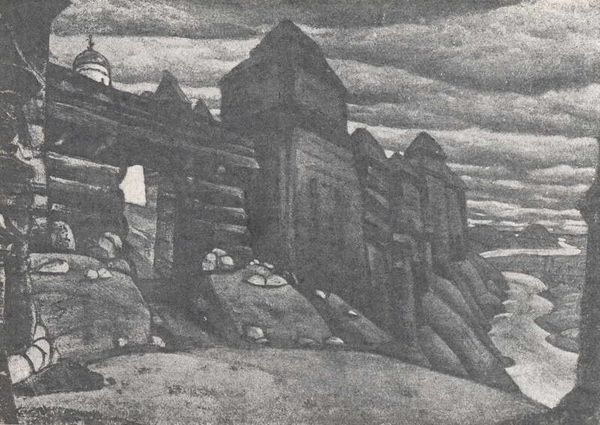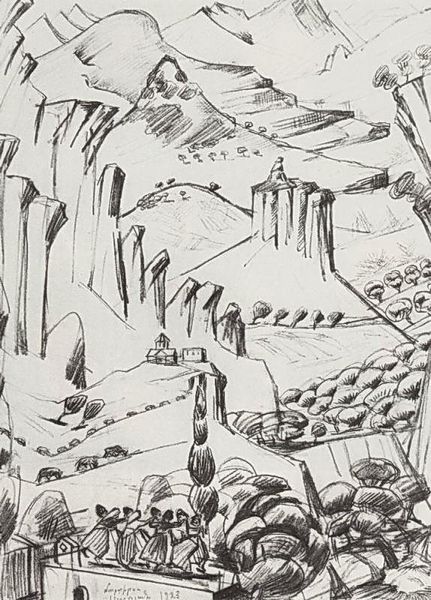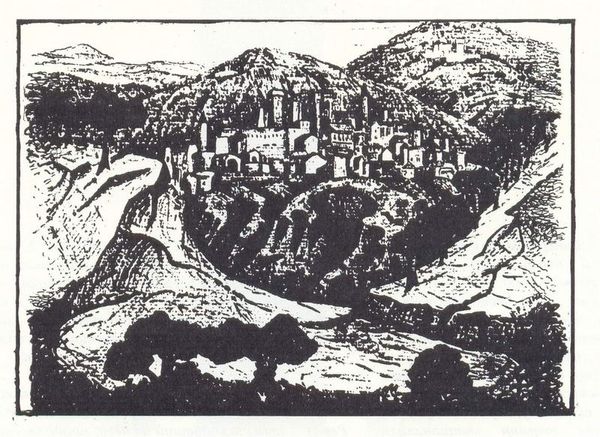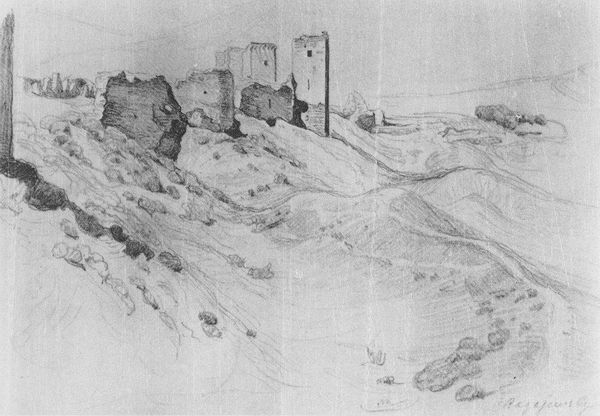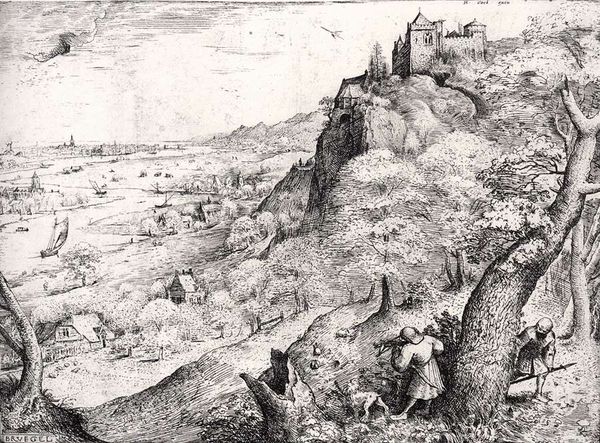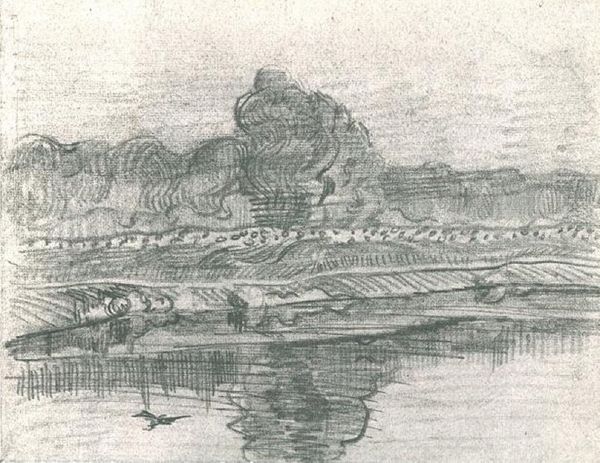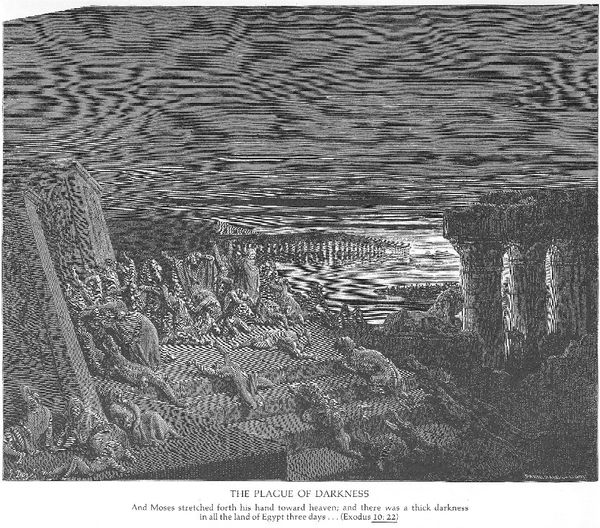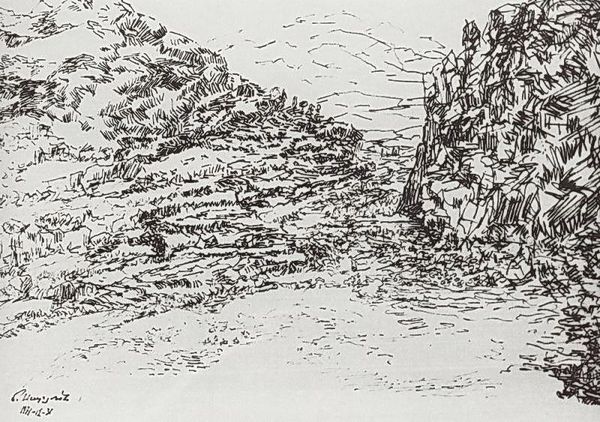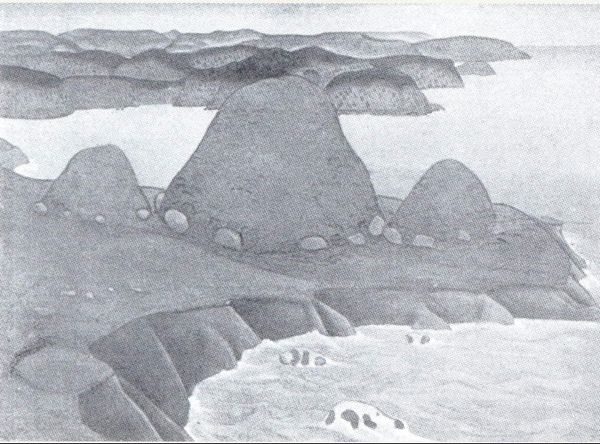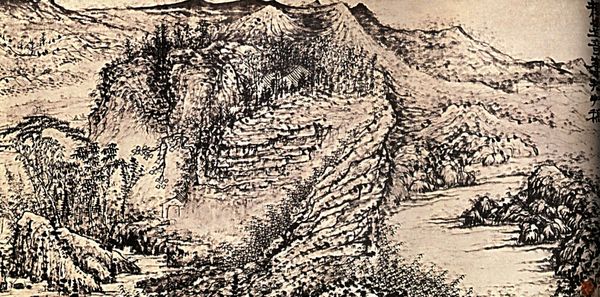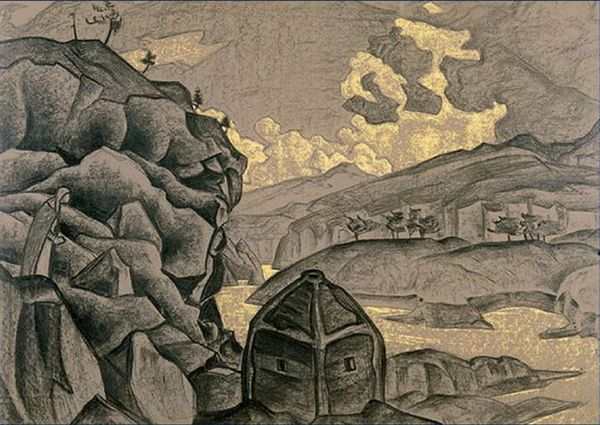
Copyright: Public domain
Editor: Right, next up, we have Nicholas Roerich's "Light Night (Castle of prince Judas Iscariot)," a charcoal drawing from 1909. It gives me such a foreboding feeling. Like some dark fairytale, looming with shadow and mystery. How do you interpret this work? Curator: Ah, Roerich, he always struck me as a dreamer standing at the crossroads of history and myth. "Light Night," with its prince Judas – what a potent, uneasy pairing. Do you see how he uses the charcoal not just to depict but to evoke? Editor: I think so. It’s all about the contrast, right? The light and the dark create all the depth, all those…feelings. Curator: Exactly. And Judas, of all figures. A betrayer, yes, but Roerich isn't painting simple villainy here. Look at the setting – fortress or prison? The light is…reluctant, almost complicit. I imagine Roerich grappling with the shadows in himself, perhaps seeing Judas as a reflection. Ever felt trapped in a narrative you didn't write for yourself? Editor: Wow, that's deep! I never thought about Judas as more than just the villain. Maybe everyone's trapped by fate somehow, like he was. Curator: Perhaps! It's less about historical accuracy and more about personal allegory, the wrestling of conscience. Think of Roerich's other works, always striving towards some mystical harmony, and then he paints this tormented night. Did something shake his faith then, I wonder? Or maybe ours? Editor: This definitely makes me want to look more into Roerich, and into how artists can turn history and myth into, like, really personal statements. Curator: Wonderful. It is good to be challenged, right? Even—especially—by shadows, wouldn't you say?
Comments
No comments
Be the first to comment and join the conversation on the ultimate creative platform.
